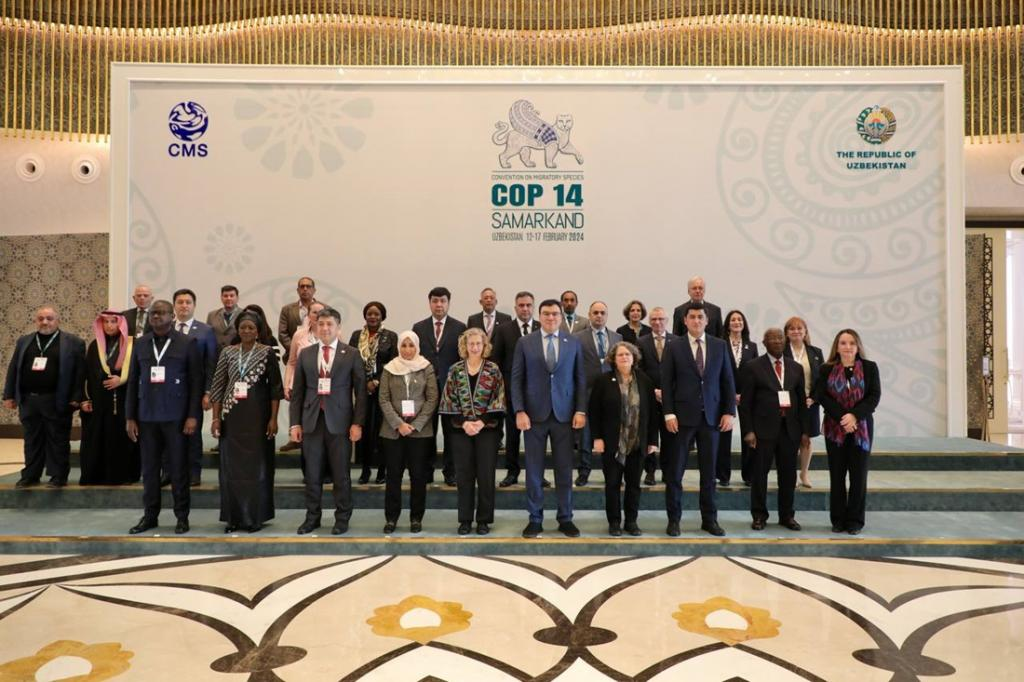Free Courses Sale ends Soon, Get It Now


Free Courses Sale ends Soon, Get It Now



Copyright infringement not intended
Picture Courtesy: https://www.downtoearth.org.in/news/pollution/international-light-pollution-guidelines-for-migratory-species-prepared-94512
Context: The International Light Pollution Guidelines for migratory species, focusing on the impact of light pollution on various migratory species, were developed by the Convention on the Conservation of Migratory Species and Wild Animals (CMS) during CMS COP14 in Samarkand, Uzbekistan.
Key Highlights of the Guidelines
Light Pollution
|
Reason |
Impact |
Steps to Take |
|
Excessive and unnecessary outdoor lighting: Overly bright lights used for advertising, security, or aesthetics |
Ecological: Disrupts animal behavior, migration patterns, and reproduction. Human: Affects sleep quality, hormone regulation, and eye health. Can also contribute to skyglow, obscuring stars and impacting astronomical observations. |
Implement lighting ordinances: Establish regulations on light intensity, timing, and color temperature to minimize unnecessary illumination. Promote responsible lighting practices: Encourage businesses and individuals to use energy-efficient fixtures, directional lighting, and motion sensors. Raise public awareness: Educate communities about the negative impacts of light pollution and promote responsible lighting choices. |
|
Poorly designed lighting infrastructure: Inefficient fixtures that emit light upwards or scatter it unnecessarily. |
Energy waste: Increases energy consumption and greenhouse gas emissions. Visual clutter: Contributes to light trespass and glare, creating an unpleasant visual environment. |
Invest in retrofitting and upgrades: Replace outdated and inefficient fixtures with modern, energy-saving models that direct light downwards. Utilize shielding and baffles: Install shields and baffles on fixtures to prevent light from escaping upwards and contributing to skyglow. |
|
Rapid urbanization and economic development: Increased demand for lighting in cities and industrial areas. |
Biodiversity loss: Can contribute to habitat degradation and population declines of nocturnal species. Health concerns: Increased risk of heart disease, diabetes, and certain cancers linked to disrupted sleep patterns. |
Promote sustainable urban development: Encourage compact, mixed-use development with pedestrian-friendly streets and green spaces, reducing reliance on artificial lighting. Integrate nature into urban design: Incorporate trees and other vegetation into urban landscapes to shield light and create natural barriers. |
|
Limited public awareness and education: Lack of understanding about the negative consequences of light pollution. |
Public apathy and inaction: Individuals may not be aware of the problem or how their choices contribute to it. |
Public awareness campaigns: Educate the public about the impacts of light pollution and promote responsible lighting practices. Community engagement initiatives: Encourage participation in light pollution reduction efforts through citizen science projects and advocacy groups. |
|
Lack of international collaboration and standards: Different countries have varying regulations and enforcement mechanisms. |
Uneven progress and limited effectiveness: Lack of global coordination hinders comprehensive solutions. |
Develop international agreements and standards: Establish international frameworks for light pollution control, promoting best practices and harmonized regulations. Facilitate knowledge sharing and technology transfer: Encourage collaboration among countries to share expertise and develop effective mitigation strategies. |
Conclusion
|
PRACTICE QUESTION Q. Lighting plays a crucial role in urban aesthetics and safety. How to design lighting solutions that fulfill both aesthetic and safety requirements while minimizing light pollution and maximizing energy efficiency? Answer Structure: ●Define the key terms and concepts of the question, such as lighting, urban aesthetics, safety, light pollution and energy efficiency. Provide some background information or context on why lighting is a crucial issue for urban development. ●Discuss the various aspects of lighting design, such as types, sources, levels, colors, patterns, etc. Explain how they affect the aesthetic and safety aspects of the urban environment. Provide some examples or case studies of good or bad lighting practices from different cities or countries. Analyze the advantages and disadvantages of different lighting solutions in terms of light pollution and energy efficiency. Suggest some measures or recommendations to improve the lighting design and management in urban areas. ●Summarize the main points and arguments of the answer. Highlight the main challenges and opportunities for lighting design in urban settings. Provide some suggestions or directions for future research or action on this topic. |
© 2024 iasgyan. All right reserved